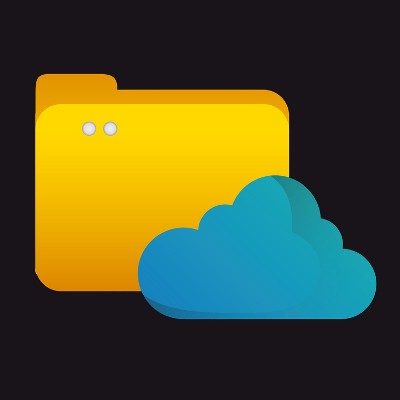The Connection, Inc Blog
In today’s business, sharing files is easy and something many workers take for granted. Unfortunately, not all file-sharing methods are secure. When efficiency is prioritized over security, it can often lead to extremely troublesome situations. For this week’s tip, we thought we’d go through a half dozen practices you can take to ensure your files get to where you need them to get safely and securely.
The cloud lets your business share files easily and efficiently, but regardless of how useful this feature is, you need to make sure that your team understands how and why they’re given access to certain files. Giving the freedom to share files is great, but it can quickly become a hindrance when you have inexperienced users doing the sharing. Be sure to take these three risks into account before handing over the keys to your business’s file sharing.
Files Shared to Accounts With Poor Password Security
Most, if not all cloud services provide each individual user with their own account for file storage and whatnot. These accounts are all protected by a specific password, which is almost always decided by the user. The unfortunate part of this is that the password is basically all that stands between the hacker and the contents of the account, as well as any files shared with that account. Passwords made without concern for account security could have the potential to leave your data vulnerable. There’s no guarantee that the account you’re sharing files with is using a complex password.
The security of data stored in a cloud solution is only as strong as the weakest link. Business owners need to ensure that each password used by employees, and anyone who accessed company data, is strong.
Files Shared with Unauthorized Hardware
If you have employees that work remotely, you need to consider that these employees might be using older technology that may not be cleared with IT. Any device that’s accessing company data can be considered an access point. Unapproved devices could potentially be infected by malware or outdated devices may not have proper security updates and patches.
Another example is an employee who travels a lot using a public Wi-Fi connection, or a public PC in a local library or a hotel lobby. If these devices are being used to send and receive files with the cloud, this data could be put at risk. Implementing a solid Bring Your Own Device policy and educating your staff on security best practices will help ensure that this doesn’t happen.
The Security of the Cloud Service Provider Itself
You may be taking advantage of top-tier security solutions for your in-house network, but your cloud service provider may not have taken the same measures to protect your data. Whatever your chosen cloud service is, make sure that it’s secure and universal throughout your company, and that it’s the standard way of sharing and storing files for your business. The last thing you want is for your employees to use an unapproved cloud sharing solution that your business has no control over.
By keeping these risks in mind, your can share files with confidence. For more information on how to achieve such a feat, The Connection, Inc can help. To learn more, reach out to us at (732) 291-5938.
There are many ways to share a file between two computers. Being familiar with multiple options will certainly come in handy, especially when your preferred method of file sharing isn’t an option (like when you can’t find your flash drive, or maybe you lose Internet connection). For this week’s tip, here are four options to help your business more effectively share files.
Share via Email
For smaller files like Word documents, you can simply attach them to an email and send them to the receiving party. Any email solution worth using, like Microsoft Outlook or Gmail, allow users to attach files and send them to a recipient, but the number and size of them cannot exceed a certain amount. Therefore, it’s crucial to understand this limit before relying on email to share important files.
Share via External Solutions
You can always share files via an external piece of hardware like a portable flash drive or USB hard disk drive. While this is a great way to share when there are no other options available, keep in mind that you also run the risk of losing them. Unless your device is protected and encrypted by a pass code of some sort, anyone who finds the device can access its contents simply by plugging your drive into one of their own devices. Therefore, you should take precautions with what information is shared in this fashion.
Share Locally via a Network Drive
Have you ever been in a situation where you need to share a file with someone else in your office, but it’s too large to send through email? You can share files locally via a network drive that connects all of your organization’s endpoints to one central location. You can then drop files into your network drive for users to access. It’s best that you utilize some sort of folder system that keeps files organized--that way, you don’t wind up with a messy network drive that makes it impossible to find important files.
Share Virtually in the Cloud
The optimal way to share files involves sharing them virtually through a cloud-based storage system. A couple of good examples of this are Google Drive and Microsoft OneDrive. You can provide each of your workers with access to a cloud-based “drive” that you control, which delegates a portion of storage for their use. However, what’s more notable is that you can create shared folders, which allow your users to share files and allow for collaboration remotely via the cloud. You can even add permissions and edit sharing details to only let specific users access important or confidential data.
How does your business transfer files, and do you find it satisfactory? Let us know in the comments, and be sure to reach out to The Connection, Inc if you want to improve the way you share and manage technology.
Microsoft OneDrive is a cloud file hosting service that uses synchronization to allow users real-time access to saved information. OneDrive, is most associated with Office 365, to which it offers one terabyte of cloud storage (there is a free tier for consumers as well). Since OneDrive is often used to save Word, Excel, Powerpoint, and OneNote documents, having access to this information from your navigation pane inside of Windows 10 makes it simpler for users to get to files inside of OneDrive. Today, we’ll take a look at how to set the feature up to sync with OneDrive.
The traditional computing structure has been under siege by cloud computing for the past several years. More businesses than ever are seeing the value in cloud-hosted applications and infrastructure, and while that may not be a huge surprise, the perceptions that the cloud can solve any of your organizational computing problems depend largely on the needs of that endeavor. Today, we will take a look at successful small business cloud strategies and tell you why they find success.
Cloud for File Sharing
File sharing is the number one reason any small business moves some of their computing to the cloud. Cooperation is essential to small business success, and a cloud-based file sharing solution gives any small business near-ubiquitous access to data. This access allows work to be completed from multiple locations, giving the small businesses great benefit as it makes them competitive with larger organizations who have more people and more resources. This allows small businesses to take charge over more of the market than ever before, increasing revenues and promoting business growth.
Cloud for Communications
Another avenue a lot of small businesses are taking is using cloud-hosted communications services. Like many other cloud-hosted applications, it can save a company quite a bit of money switching to a VoIP system or public-cloud-hosted email solution. What about functionality? Cloud-hosted VoIP is actually a great solution for any organization looking for a feature-rich phone platform and wants to do away with their traditional phone bill. With feature-rich packages, any organization can get the customized VoIP solution that fits in their budget and provides them options for messaging, conferencing, and enterprise-level phone services.
Hosted email can provide a lot of benefits, as well. It eliminates the costs associated with the hosting and management of the email server, while providing users enhanced functionality that includes added message encryption, instant messaging integration, and much more.
Cloud for Storage
When you think about cloud storage, the first thing that must come to mind are the hundreds of gigabytes that many cloud storage providers just give away to anyone that signs up for their services; and the affordable options individual users can explore to gain a substantial amount of cloud storage space. The issue for small businesses is that public cloud hosted storage facilities don’t provide them the control over their data that most of them would like. This is why you see organizations building their own private cloud inhouse or collocate it to a data center where they have full control over the data.
The benefits of cloud storage are that data is accessible from anywhere, giving a business increased mobility that can definitely benefit them over time. The perceived lack of security that some organizations point to is largely in how their employees utilize the cloud interface, not the cloud environment itself, as it is likely highly encrypted. Many organizations have begun to use cloud storage interfaces for redundancy, making cloud-based backup and recovery solutions a fairly attractive option to secure backup files.
Cloud for Security
Nowadays, security is the top line-item for about any IT administrator. Since there is an abundance of threats every organization has to be cognizant of, it only makes sense that cybersecurity firms start offering their comprehensive network and cybersecurity services. In utilizing a SEaaS system IT administrators can leverage some of today’s most potent security solutions from the Internet. This provides a full cache of services to IT administrators.
Once you ascertain what threats you are up against, utilizing a Security as a service software will allow you to remote into any machine and set up high-end security services that can be customized to your organization's needs. These security services go a long way toward keeping software and hardware up to date with latest security permissions. There are options for anti-malware, content filtering, spam blocking, and more, making cloud security a good investment for the organization that depends on the Internet for their business.
The cloud has expanded to include almost any type of computing you can think of. For your business, it can be the answer to all questions your risk assessments have presented. For more information about hosted solutions and utility computing, call the IT professionals at The Connection, Inc today at (732) 291-5938.
In the business world, you rely on agile and secure access to critical documents on a number of different devices. However, security can quickly become a problem, especially when your users have multiple devices. Is your file sharing service enough to keep your data safe? Or, if it’s not, what are you going to do about it?
It’s safe to say that most file-sharing solutions have their roots in the cloud. The cloud allows organizations to collaborate and share documents across devices and operating systems, to create a network that your staff can use to access important information and applications. A cloud solution is often used for hosting productivity suites and email systems, but most important of all is file sharing.
Many cloud solutions also offer applications that are designed for collaboration, which means that your team can create documents and communicate in real-time. Business applications like Google’s G-Suite and Microsoft OneDrive for Business can sync your files across your entire device infrastructure, so that all of your employees have access to the most recent version of a specific document. This is helpful if your business has many different people collaborating on the same project.
The only question that remains is how secure your cloud needs to be. Since you’re storing your data in a cloud-based format online, you run the risk of hackers and user error bringing your business to its knees. Surprisingly, however, most file-sharing systems are relatively secure, and the main threat comes not from external threats, but from inside users. User error is a primary cause for data breaches, as they can accidentally expose files to dangerous circumstances or hand over credentials without realizing it. Therefore, something needs to be done in order to guarantee that your files aren’t being exposed to more threats than necessary.
Depending on the type of cloud solution you implement, you can have full control over the user access and security permissions of your file sharing system. A public cloud can provide the basic file storage and sharing services that you desire, but if you want maximum security, you’ll want to invest in a private cloud, where your solution is stored on-site. The only problem is that private clouds require extensive management and maintenance that your business might not have time for.
The Connection, Inc can ease this pain point by offering our cloud management solution. If you want to get the most security out of your file-sharing in the cloud, you’ll need expert technicians to monitor and maintain your private cloud server. However, the SMB’s IT budget doesn’t typically allow for this type of flexibility. Outsourcing this responsibility to The Connection, Inc makes your job much easier, as you don’t have to invest the time and resources into it.
To learn more about file-sharing services and cloud computing, reach out to us at (732) 291-5938.







